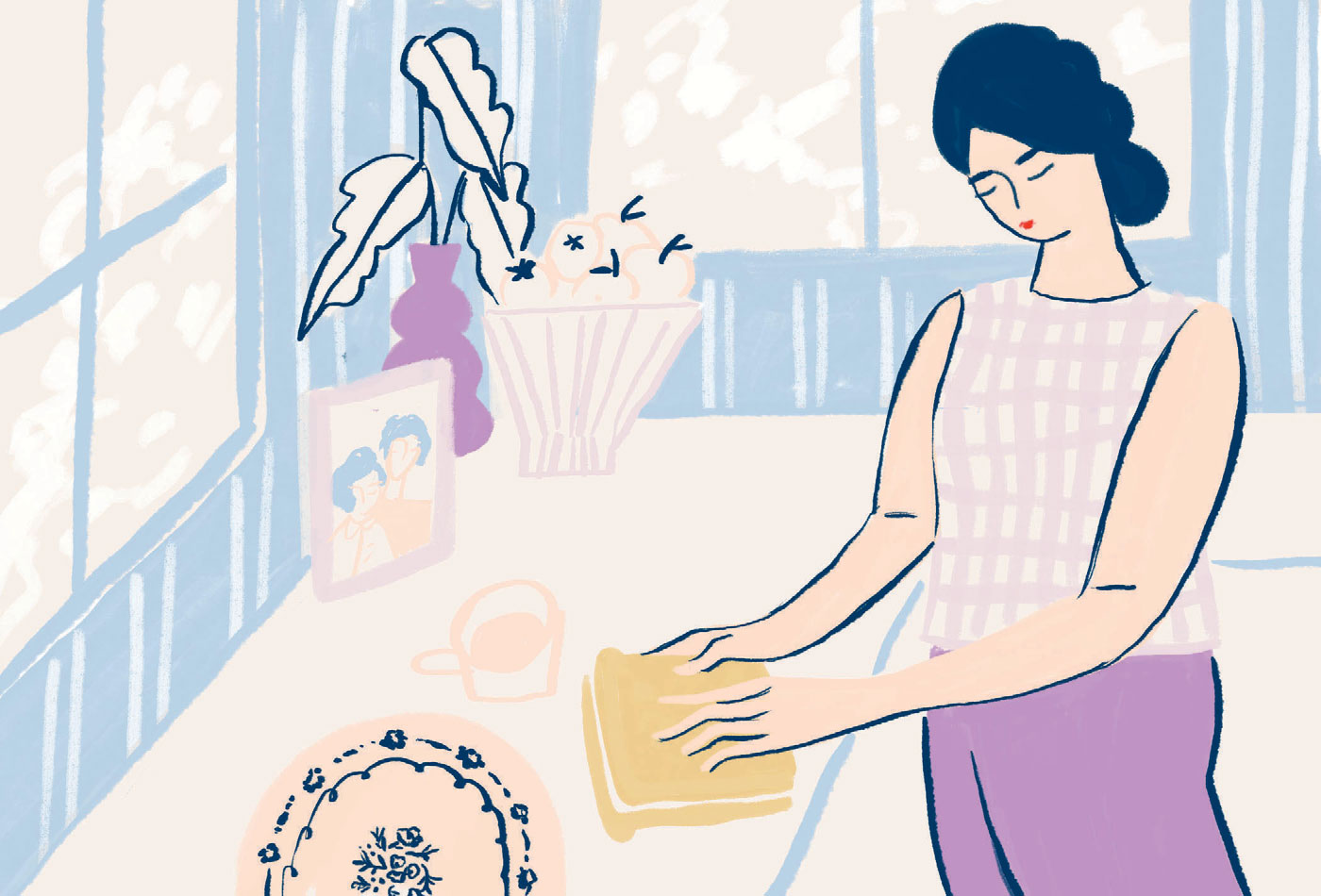Sandwich Season
After years of cooking for others, one woman relearns the art of cooking for herself.
The soft light of a low sun filtered through the trees. I stood in the kitchen, staring out at the changing leaves, cheese sandwich in hand: a midweek, mid-fall dinner. Again.
A year before, I’d have been nudging my daughter out the door onto the deck, trying to convince her that the mosquitos had dwindled to citronella-manageable numbers. I’d have cooked outside on the grill, wanted to linger in the ease of a southern autumn evening, welcoming the release from summer humidity. In the years before that, her brothers would have been there, too.
For a long time, there were five of us around the table, not counting the lurking, hopeful cats and dogs at our feet.
In the kitchen, with the last morsel of cheese sandwich in hand and the dogs at my feet, I didn’t want to think about that. I chewed, swallowed, held still, told myself it was good cheese—a sharp, crumbly cheddar—and respectable bread of the grainy, crusty, almost-European variety. I was busy. I’d started a new job. Perhaps I was burned out on cooking after nearly three decades of breakfasts, lunches, and dinners for a family. I’d adjust, find the time and the desire to cook again, to sit at the table, inside or out.
When I was a girl, dinner at the table was a requirement, a signifier of a civilized family. So long as we sat around the table together at precisely 6 each night, all was well, even when it wasn’t. My dad insisted. My mum, on the other hand, saw cooking as a chore. When Dad travelled for work, we could be assured of fish and chips from the local chippie, or, better, a take-away curry from the nearest Indian restaurant. That wasn’t often, though, so each night, she stepped to the stove to prepare what was on the rota. It was Scotland. It was the 1970s, which meant potatoes, a can of peas or boiled root vegetable, meat. As best I can recall, Mondays were mince—ground beef with carrots and onions, cooked and cooked and cooked. Tuesdays were calf liver and onions, peas, mashed potatoes. Wednesdays featured chips. My brother counted them to be sure the share was equal.
My grandmother’s kitchen was different. She baked Irish wheaten bread almost daily, set the porridge on to soak overnight. She taught me how to handle flour gently, to let it filter through my fingers to make the scones light. There, at her kitchen counter with the western hills rising outside the window, it felt as though we were doing something magical, making nourishment out of spoons of this and cups of that. Years later, when she wrote down her recipes for me, the instructions would include phrases like “I use a smallish teacup for the flour.”
As I learned to navigate my own kitchen after the birth of my first child, when I was only twenty, it was Granny Marshall who was with me—directly, through her recipes, and in ways I didn’t realize. By the time my second child arrived, eight years after the first, and then the third, I knew what I was doing in the kitchen. I’d become the kind of cook who, when asked for a recipe, could give only approximations of what might have been included in any given batch, who glanced at recipes and knew in which direction I’d take them. I loved to cook. Breakfast, lunch, dinner.
And so, I found myself bewildered to have arrived in what seemed to be a season of sandwiches.
The leaves drifted to the ground. The mornings and evenings began to nip. The sandwiches remained. I stood in the open door to the pantry, staring. I stood in the open door of the fridge. I’d been deserted. The impulse to plot a meal, gather ingredients, set to the magic and see what could be conjured had fled and I had no idea where or how to find it. Perhaps this was simply how single people ate, and no one had told me.
That Thanksgiving, my younger son and I flew across the country to visit my daughter in Oregon, where she was in her first semester in college. We arrived the day before Thanksgiving, and it did not occur to me that we would do anything other than set out, list-in-hand, to gather the ingredients for a full Thanksgiving dinner.
Early the next afternoon, we pulled our from-scratch apple pie from the oven of the dorm kitchen and wafted it across the foyer of the hotel. While it cooled on the counter, we conjured the rest in the hotel-room kitchen. There it was, the elusive impulse to cook, returned at last, I thought.
A week later, it would seem like some sort of fairy creature, briefly surfaced from some underworld of my self, only to retreat to a place where I seemed unable to follow. There I stood again, with my sandwich. The least I could do, I thought, would be to alternate cheeses. In late January, my daughter and son had come for the holidays and gone. Along with them, the plotting, the gathering, the chopping and blending and sifting, and the desire to do all of it had also paid a visit and departed. I sat at the table. Alone. I began to understand.
One of my friends had recently told me about love languages. She’d explained that her love language, affirmation, didn’t match up with her ex-husband’s, which tended to involve spending. Her new husband and she worked much more smoothly together; acts of service and affirmation seemed to go hand in hand. At the time, I’d been happy for her, though I wasn’t sure about the concept. It didn’t seem to apply to me, a single woman with a newly empty nest. As I sat at the table that January, still with the leaves in so that it could seat ten, I began to wonder if food was one of the love languages. If not, surely it should be added. I mean to realize that, with each muffin and frittata and pumpkin waffle, with every sift of the flour, sweep of the spoon in the soup stock, with every punching down of the dough, I had been trying to offer my children what Granny Marshall had offered me. Not just food for the body. A grounding. A home. Love. I’d become a mother at twenty. There had always been someone else to give this offering. I’d never done it just for myself.
There at the table, I began. I did not push back the chair, sprint to the car, gather the ingredients and step to the stove. I began a slow journey back to the kitchen, to the grill, to the table. There is, still, the occasional sandwich. That initial season has passed.
Though they may not know it, my children have helped. Each time they text for recipes, it is an affirmation that they might just have received what I was giving. Each time they Snapchat the food on the stove, they are models for how I might nourish myself. I find myself, now, as I imagine my grandmother found herself, passing on the recipes, gathering the ingredients that call to the palate, or to the heart, on any given day, navigating this next phase of life, learning, after all this time, how to nourish myself.





